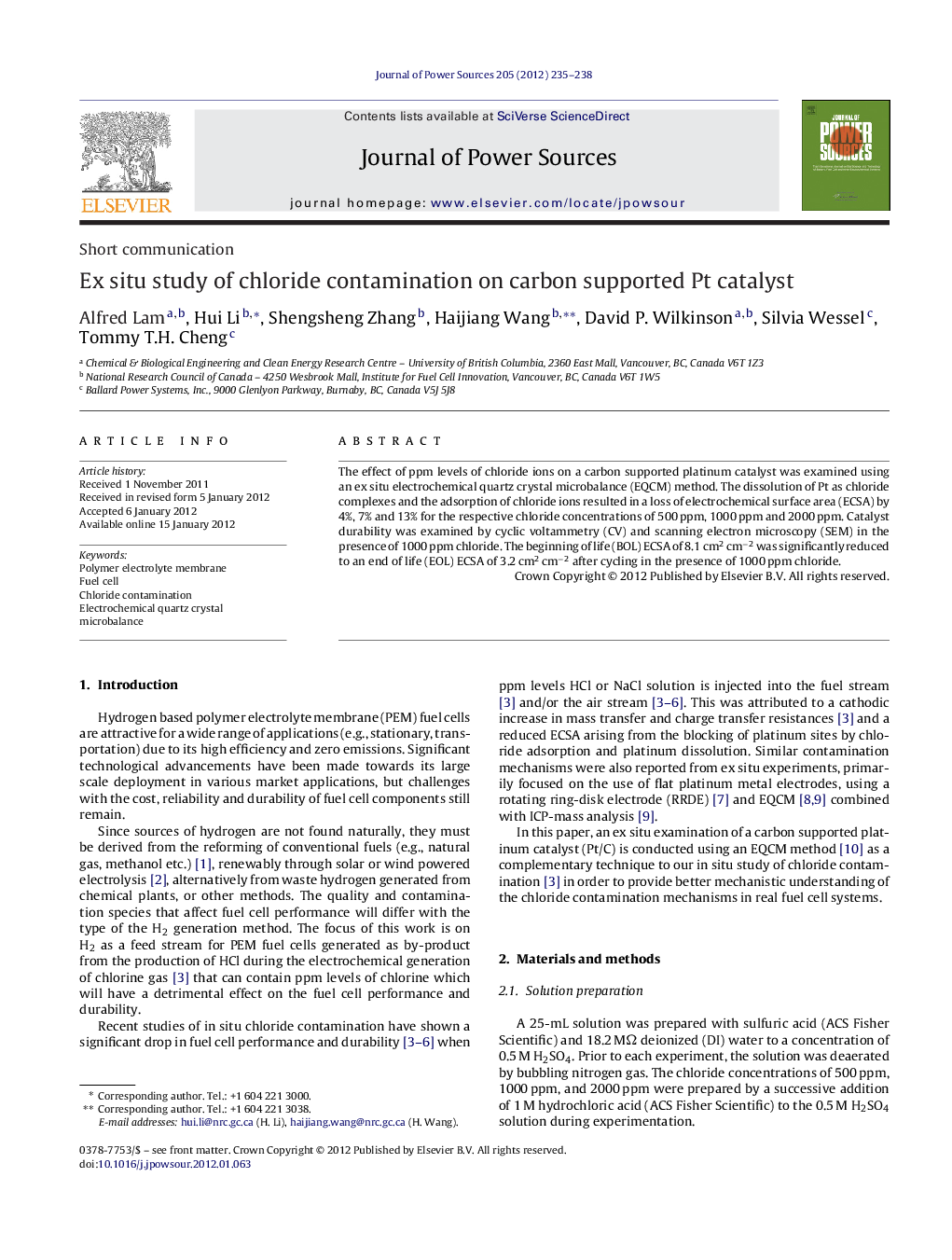| Article ID | Journal | Published Year | Pages | File Type |
|---|---|---|---|---|
| 1288138 | Journal of Power Sources | 2012 | 4 Pages |
The effect of ppm levels of chloride ions on a carbon supported platinum catalyst was examined using an ex situ electrochemical quartz crystal microbalance (EQCM) method. The dissolution of Pt as chloride complexes and the adsorption of chloride ions resulted in a loss of electrochemical surface area (ECSA) by 4%, 7% and 13% for the respective chloride concentrations of 500 ppm, 1000 ppm and 2000 ppm. Catalyst durability was examined by cyclic voltammetry (CV) and scanning electron microscopy (SEM) in the presence of 1000 ppm chloride. The beginning of life (BOL) ECSA of 8.1 cm2 cm−2 was significantly reduced to an end of life (EOL) ECSA of 3.2 cm2 cm−2 after cycling in the presence of 1000 ppm chloride.
► We tested the Cl− effect on Pt/C catalyst using EQCM method. ► The dissolution of Pt resulted in an electrochemical surface area loss. ► SEM images showed agglomeration on the catalyst surface after potential cycles with Cl−.
